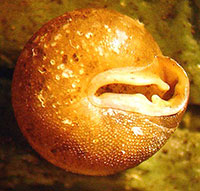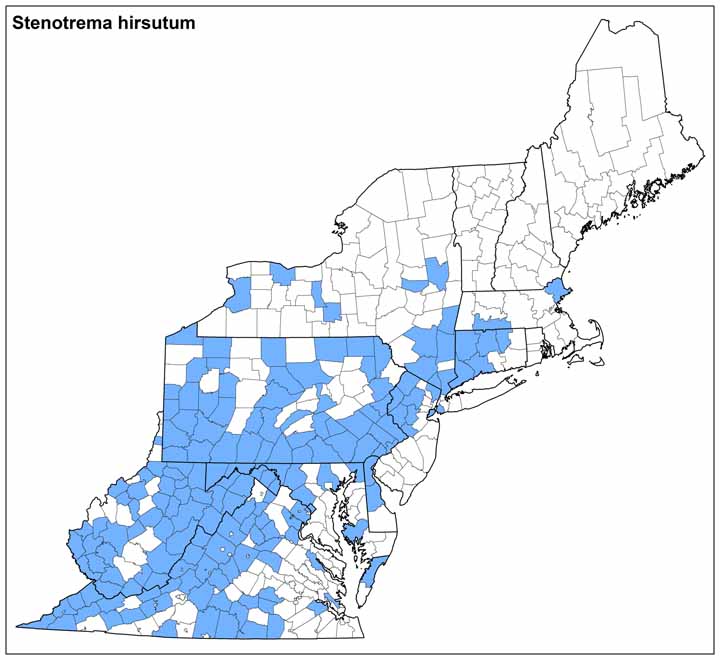Land Snails

Photo: Shell of Stenotrema burringtoni © Ken Hotopp. Note the knob-like tooth just right of the basal lip notch.
Click photo to enlarge.
Stenotrema burringtoni (Grimm, 1971)
Family: Polygyridae
Common name: none
Identification
Width: 8.4 mm
Height: 5.5 mm
Whorls: 5
Stenotrema burringtoni has a small depressed-globose shell, covered densely in short hairs and having quite a narrow aperture. The shell is imperforate and colored a pale cinnamon-brown. The parietal lamella is relatively wide and sinuous, curving into the interdenticular sinus. The basal lip is wide and thickened, with a relatively deep notch.
In this species the fulcrum, an interior lamella near the columella, is stout and pointed downward or slightly to the right. Its base can sometimes be seen through the shell. In S. hirsutum the fulcrum is more frail and pointed to the left, its parietal tooth less sinuous and less pronounced, its basal notch more shallow, and its hairs less dense.
Ecology
Though known from few sites, Stenotrema burringtoni is apparently a calciphile, found in limestone talus or rubble.
Taxonomy
This species was submerged within S. hirsutum by Hubricht (1974), but it consistently differs from S. hirsutum in aperture and fulcrum shape. There are no synonyms.
Distribution
The range of Stenotrema burringtoni is uncertain as it has not been long-recognized as a species distinct from S. hirsutum. It does appear to be globally restricted, reported by Grimm (1971) from one Highland county site and found in recent work by the author in Alleghany County.
NatureServe Global Rank: G5Q (in error)
NatureServe State Rank: SNR
Ken Hotopp 12/2013
Range Map (click to enlarge)


